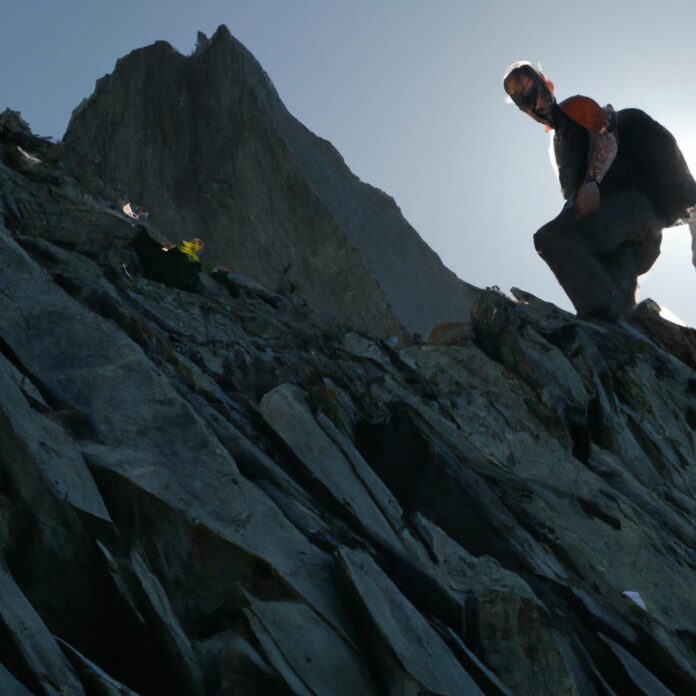Outdoor adventures can be thrilling and rewarding, but they also require essential navigation skills to ensure safety and success. Whether you’re hiking, camping, or exploring the wilderness, having a solid understanding of navigation techniques is crucial. This article will guide you through the essential navigation skills needed for your outdoor adventures.
Introduction to essential navigation skills for an outdoor adventure
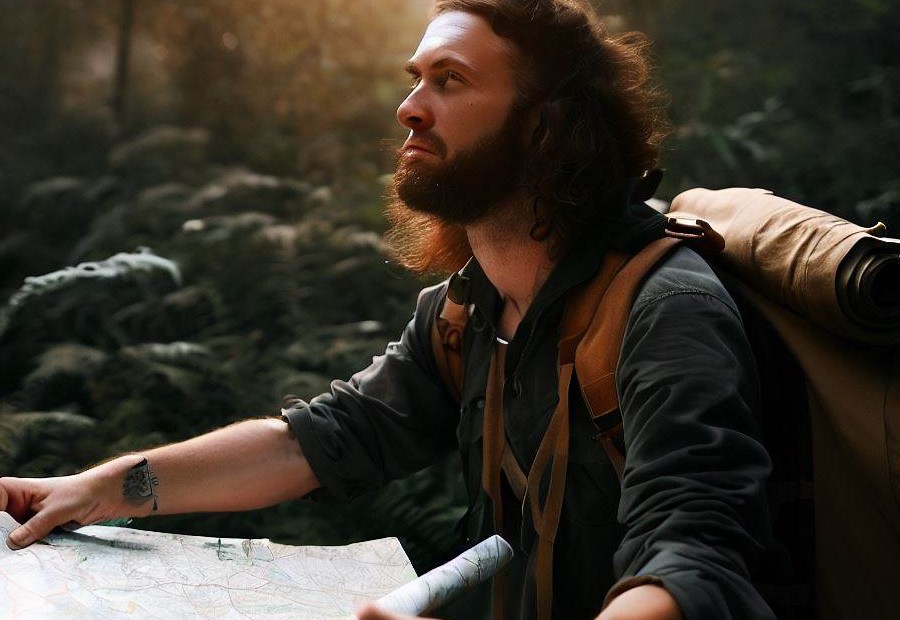
Navigating in outdoor environments requires a combination of map reading, compass skills, and land navigation techniques. Understanding these skills will help you navigate effectively, stay on the right track, and reach your destination with confidence.
Learning and practicing these skills will not only enhance your outdoor experience but also ensure your safety in unfamiliar terrains.
Understanding Maps and Compasses:
To navigate successfully in outdoor environments, it’s essential to know how to read and interpret maps and effectively use a compass.
Reading topographic maps is the foundation of outdoor navigation as they provide detailed information about the terrain, elevation, and natural features.
Using a compass complements map reading and helps you determine directions, orient yourself, and navigate accurately.
Land Navigation Techniques:
In addition to map and compass skills, learning land navigation techniques is crucial for successful outdoor navigation. Dead reckoning involves estimating your position based on a known starting point, distance traveled, and direction.
Using landmarks and terrain features as navigational aids helps you identify your location and make course corrections. Using GPS and other modern technology can also be advantageous, but it’s essential to have backup navigation methods in case of technology failure or limited signal availability.
Navigating in Challenging Environments:
Different outdoor environments present unique challenges when it comes to navigation. Navigating in dense forests requires awareness of natural landmarks, maintaining a sense of direction, and using techniques like handrailing and aiming off.
Mountainous terrain navigation involves understanding contours, slope angles, and using ridge lines and valleys as navigational aids. Navigating across water bodies necessitates knowledge of tides, currents, and using visual references for orientation.
Safety Considerations for Outdoor Navigation:
Outdoor navigation goes hand in hand with safety considerations. Creating a trip plan before setting out helps you communicate your route, estimated time of return, and emergency contact information.
Understanding weather patterns and interpreting weather forecasts is critical for planning and adapting your navigation strategy to changing conditions. Being prepared for emergency situations and carrying essential safety equipment is vital for any outdoor adventure.
Improving Navigation Skills and Practice:
Enhancing your navigation skills requires continuous learning and practice. Taking navigation courses or workshops can provide valuable insights and hands-on training. Regular navigation practice and gaining outdoor experience help build confidence and reinforce your skills in different terrains and conditions.
By acquiring and honing essential navigation skills, you can embark on outdoor adventures with confidence and ensure a safe and successful journey. This article will delve deeper into each navigation skill, providing guidance, tips, and techniques to further enhance your outdoor navigation abilities.
Understanding Maps and Compasses
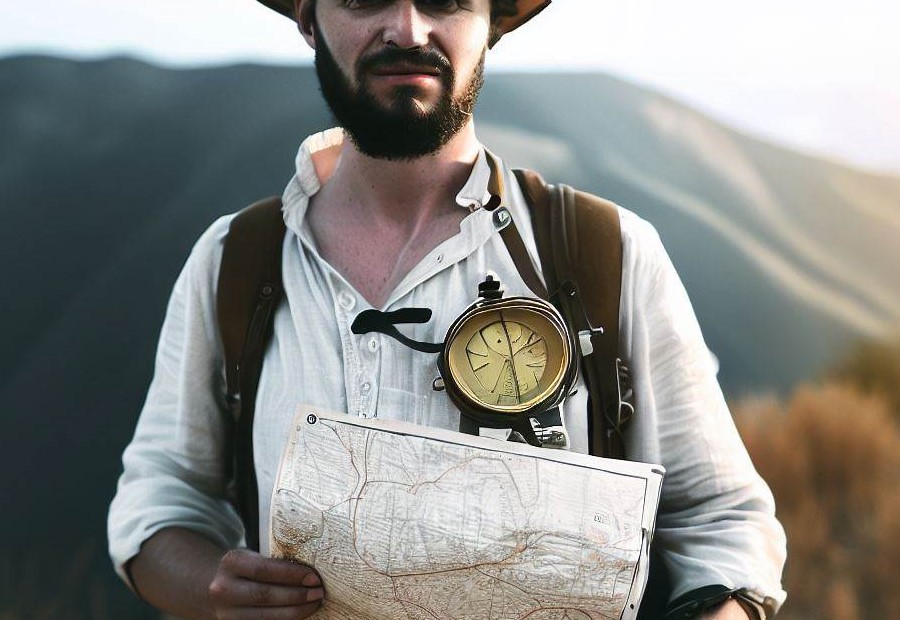
Unlock the secrets of outdoor navigation with a deep dive into Understanding Maps and Compasses. Discover the power of Reading Topographic Maps, master the art of Using a Compass for Navigation, and learn how to navigate with ease using Compass Bearings and Directions. Let’s embark on a journey where you’ll never be lost again amidst nature’s playgrounds. Pack your curiosity and join us as we unravel the essentials of outdoor navigation.
Reading Topographic Maps
When it comes to outdoor navigation, reading topographic maps is an essential skill. These maps provide detailed information about the terrain, including elevation, slopes, and natural and man-made features.
- To read topographic maps, start by understanding the contour lines. These lines represent elevation, and the closer they are together, the steeper the slope.
- Pay attention to the contour intervals, which indicate the vertical distance between each contour line.
- Identify key landmarks on the map, such as rivers, lakes, and prominent peaks, to help orient yourself in the field.
- Use the scale on the map to determine distances and plan your route accordingly.
- Refer to the legend to understand the symbols and colors used on the map, which represent vegetation, roads, and other features.
- Practice interpreting topographic maps by comparing them to the actual terrain to develop a better understanding of the representation.
Reading topographic maps is crucial for navigating through unfamiliar landscapes and ensuring a safe outdoor adventure.
Did you know that topographic maps have been used for centuries, with the first maps being created by military surveyors in the 19th century?
Using a Compass for Navigation
Using a compass for navigation is a crucial skill in outdoor adventures. Here are the steps to effectively use a compass:
- Hold the compass flat in your palm, making sure the direction-of-travel arrow points straight ahead.
- Rotate the compass housing until the orienting arrow aligns with the magnetic needle.
- Read the bearing at the index line on the compass housing.
- Turn your body until the north end of the magnetic needle aligns with the orienting arrow.
- Follow the direction-of-travel arrow on the compass and proceed in that direction.
History shows that the compass has been used for navigation for thousands of years. Its invention revolutionized travel and exploration, allowing sailors and adventurers to navigate uncharted territories.
The compass played a pivotal role in the Age of Discovery, opening up new trade routes and shaping the world we know today. It remains an essential tool for outdoor enthusiasts, enabling them to find their way through unfamiliar terrain and stay on course even in challenging environments.
Through the centuries, the compass has guided countless explorers, adventurers, and wanderers, making it a symbol of discovery and navigation.
Compass Bearings and Directions
When it comes to outdoor navigation, understanding compass bearings and directions is essential for a successful adventure. Here are some important points to consider:
- Importance of compass bearings: Compass bearings are used to determine the direction of travel, orient a map, and navigate to specific points. They provide a reliable reference for staying on course and navigating accurately.
- Using a compass for navigation: Hold the compass flat in your hand and align the compass needle with the orienting arrow. Rotate the compass housing until the needle aligns with the magnetic north arrow. Now, the index line on the north end of the compass housing indicates the direction of travel.
- Reading compass bearings: Compasses are marked with degrees, ranging from 0° to 360°. To read a bearing, align the compass edge with the desired destination on the map and rotate the compass housing until the index line aligns with the magnetic north arrow. The number on the index line indicates the compass bearing.
- Taking accurate readings: Ensure the compass is level and away from any magnetic interference, such as metal objects or electrical devices. Holding the compass steady and taking multiple readings can help improve accuracy.
- Following compass directions: When using a compass for navigation, it’s important to follow the desired compass direction precisely. Regularly check the compass to ensure you’re staying on course and making adjustments as necessary.
By understanding compass bearings and directions, outdoor adventurers can confidently navigate through unfamiliar terrain and reach their destinations with ease.
Land Navigation Techniques
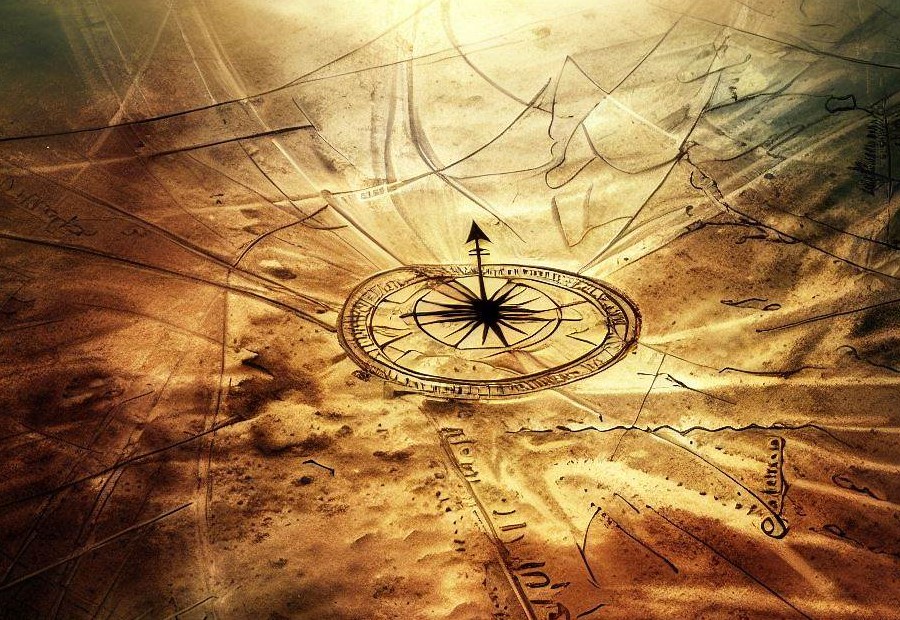
When venturing into the great outdoors, having strong navigation skills is paramount. In this section, we’ll delve into the world of land navigation techniques that will guide you through any adventure.
From the art of dead reckoning to utilizing landmarks and terrain features, and even incorporating GPS and technology, we’ll uncover the essential tools you need to confidently conquer the wilderness. So, grab your compass and let’s navigate our way through this thrilling journey of orienteering expertise.
Dead Reckoning
Dead reckoning is a crucial technique in outdoor adventures that involves estimating your current position based on the direction and distance traveled from a known starting point. This method requires advanced map reading skills and the ability to navigate without relying on landmarks or GPS.
For accurate dead reckoning, it is essential to maintain an accurate heading and carefully measure your steps to calculate the distance covered. By continuously updating your position using speed, time, and direction, you can plot an estimated location on a map.
Accuracy in dead reckoning heavily relies on consistent speed and direction since any errors will accumulate as you travel further. It is important to regularly monitor your progress by cross-checking with visible landmarks or wayfinding features.
Dead reckoning proves particularly useful in navigating featureless or unfamiliar terrains, such as dense forests or open plains, during outdoor adventures. It serves as a reliable fallback method when other navigation tools are unavailable or fail.
To master dead reckoning, practice and refine your skills in map reading, compass navigation, and distance measurement are imperative. By becoming proficient in this technique, you can confidently navigate challenging environments and ensure your safety in outdoor adventures.
Using Landmarks and Terrain Features
Using landmarks and terrain features is an essential aspect of outdoor navigation. Being aware of your surroundings and understanding how to interpret the features of the landscape allows you to navigate effectively through unfamiliar terrain.
- Identify prominent landmarks: Look for distinctive features such as mountains, lakes, or buildings that can serve as reference points. These landmarks can help you orient yourself and track your progress.
- Use natural formations: Pay attention to natural formations like rivers, ridges, valleys, or cliffs. These features can act as guides and assist you in determining your position on a map.
- Observe vegetation patterns: Different types of vegetation can indicate specific terrain characteristics. For example, dense forests may suggest difficult terrain, while open fields may signify easier travel.
- Take note of man-made structures: Human-made structures like roads, trails, or fences can provide valuable navigation cues. These structures often follow logical routes and can assist in finding your way.
- Study contour lines: Topographic maps display contour lines that represent changes in elevation. By analyzing the contour lines, you can determine the slope of the land, identify hills or depressions, and plan your route accordingly.
Using GPS and Technology
The use of GPS and technology can greatly enhance outdoor navigation skills. Here are some key points to consider:
- Utilizing GPS devices can provide accurate positioning and real-time tracking of your location during an outdoor adventure. These devices use satellite signals to determine your coordinates, allowing you to navigate with confidence using GPS and technology.
- There are various mapping applications available for smartphones and tablets that utilize GPS technology. These apps can provide detailed maps, satellite imagery, and even topographic information to help you plan and navigate your route using GPS and technology.
- Many GPS devices and smartphones come equipped with a digital compass feature. This can help you determine your direction of travel and orient yourself on a map, especially when combined with GPS coordinates and GPS and technology.
- GPS technology allows you to mark waypoints along your route, making it easier to navigate back to specific locations. This is particularly useful in unfamiliar terrain or when exploring remote areas using GPS and technology.
- GPS devices can provide accurate information on elevation gain, loss, and overall distance covered. This can be valuable for planning your route and measuring progress during your outdoor adventure using GPS and technology.
- When using GPS and technology for navigation, it is crucial to consider battery life and have backup power sources or paper maps as a backup. It’s important to be prepared for any technological glitches or battery failures that may occur while using GPS and technology.
Navigating in Challenging Environments
Mastering the art of navigation in challenging environments is key to a successful outdoor adventure. In this section, we’ll dive into the various sub-sections: navigating through dense forests, maneuvering in mountainous terrain, and traversing across water bodies.
Get ready to discover insider tips and techniques that will enhance your ability to navigate through these demanding landscapes. So, let’s put on our adventure hats and explore the exciting world of challenging environment navigation!
Navigating in Dense Forests
Navigating in dense forests requires specific skills to ensure you stay on track and reach your destination safely. Here are some important factors to consider when navigating in dense forests:
1. Awareness of surroundings: In dense forests, visibility can be limited due to dense foliage. It is crucial to stay alert and observe your surroundings carefully. Look for natural landmarks, such as distinctive trees or rock formations, to help orient yourself in navigating dense forests.
2. Map and compass skills: Having a topographic map and a compass is essential for navigating in dense forests. Learn to read the map properly and use the compass to establish your bearings and direction while navigating in dense forests. Keep in mind that magnetic anomalies in the forest might affect the accuracy of your compass, so double-check your navigation in dense forests.
3. Trailblazing techniques: When there are no established trails in the forest, you’ll need to create your own path while navigating in dense forests. Look for natural clearings or animal trails to follow. Stay on higher ground to avoid getting disoriented and use your map and compass to maintain your course in dense forests.
4. Skillful tree identification: Familiarize yourself with tree species commonly found in the forest while navigating in dense forests. Some trees have unique characteristics that can serve as useful landmarks while navigating in dense forests. Recognizing these trees can help you maintain your direction and avoid backtracking in dense forests.
5. Patience and perseverance: Navigating through dense forests can be time-consuming and challenging. Be patient and take your time to ensure accurate navigation in dense forests. If you’re feeling lost, take a moment to reevaluate your position and refer to your map while navigating in dense forests.
By considering these essential factors, you can enhance your navigation skills and confidently navigate through dense forests. Practice regularly and gain experience in different environments to boost your proficiency in navigating in dense forests. Remember, safety should always be a priority in any outdoor adventure.
Navigation in Mountainous Terrain
When navigating in mountainous terrain during an outdoor adventure, it is important to follow these steps:
- Study the topographic map of the area to familiarize yourself with the terrain and elevation changes in mountainous terrain
- Identify prominent features such as peaks, valleys, and ridges to use as reference points for navigation in mountainous terrain.
- Use a compass to determine your current location and the direction you need to travel in mountainous terrain.
- Adjust your route to avoid steep slopes or cliffs that may be difficult to traverse in mountainous terrain.
- Pay attention to the contour lines on the map to understand the steepness of the terrain in mountainous terrain.
- Take note of any established trails or paths that can provide easier navigation in mountainous terrain.
- Be aware of potential hazards such as loose rocks, unstable slopes, or crevasses in mountainous terrain.
- Regularly check your compass and map to ensure you are staying on track in mountainous terrain.
- During ascent or descent, maintain a steady pace and conserve energy for the challenging terrain in mountainous terrain.
- If weather conditions worsen or visibility decreases, consider finding shelter or adjusting your plans accordingly in mountainous terrain.
By following these steps, you can navigate safely and effectively in mountainous terrain during your outdoor adventure.
Navigation Across Water Bodies
| Navigation Across Water Bodies |
| When navigating across water bodies during an outdoor adventure, there are several important factors to consider. |
| 1. Assess the distance: Determine the distance you need to navigate across the water body. This will help you plan your route and estimate the time it will take to cross. |
| 2. Check the water conditions: Evaluate the current and tide conditions, as they can greatly affect your navigation. Strong currents or high tides may require additional precautions or alternative routes. |
| 3. Choose appropriate equipment: Use a suitable watercraft or flotation device based on the size and type of water body. Ensure it is in good condition and properly inflated or secured. |
| 4. Plan for safety: Wear a personal flotation device (PFD) at all times during the water crossing. Inform someone of your plans, including your expected time of arrival and destination. |
| 5. Watch for hazards: Be aware of potential hazards such as submerged objects, strong currents, or changing weather conditions. Safely navigate around such obstacles to avoid accidents. |
| 6. Practice navigation techniques: Use a combination of map reading, compass bearings, and GPS if available, to ensure you are staying on course and heading in the right direction. |
| Navigating across water bodies can be challenging but with proper preparation and attention to safety, it can also be a rewarding part of your outdoor adventure. |
Safety Considerations for Outdoor Navigation
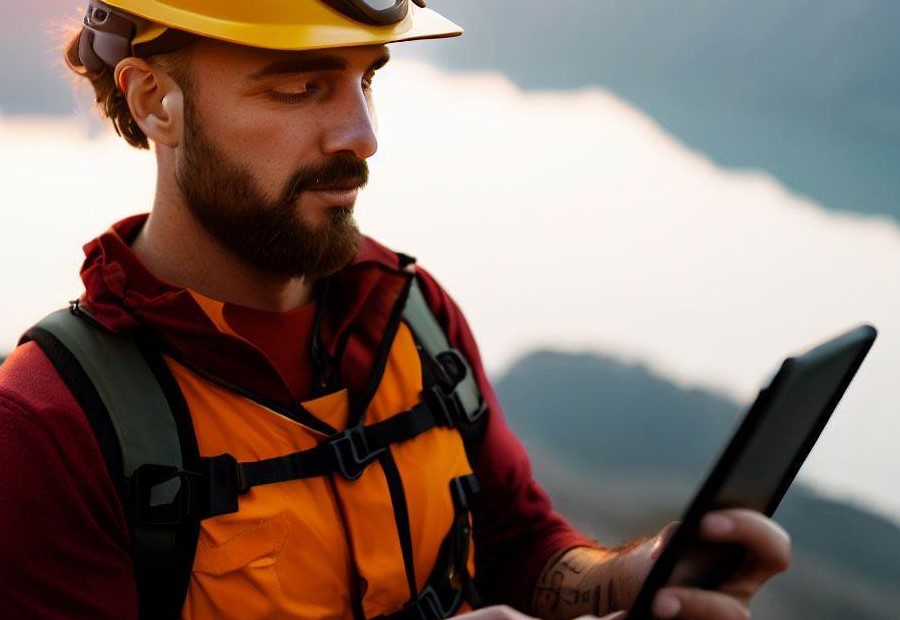
When heading out on an outdoor adventure, safety should always be a top priority. In this section, we’ll explore some key considerations for ensuring your safety during navigation. From creating a thorough trip plan to understanding weather patterns and handling emergency situations, we’ve got you covered. So, grab your compass and lace up your boots as we dive into the essential navigation skills you need to stay safe in the great outdoors.
Creating a Trip Plan
Creating a trip plan is an essential step in ensuring a safe and successful outdoor adventure. Follow these steps to create a thorough trip plan:
Research the destination:
Gather information on the area you will be visiting, including maps, guidebooks, and online resources. Familiarize yourself with the terrain, landmarks, and any potential hazards related to creating a trip plan.
Set objectives:
Determine the goals and objectives for your trip in the process of creating a trip plan. This could include reaching a specific summit, exploring a certain trail, or simply enjoying the scenery.
Plan the route:
Use maps and other navigation tools to plan your route when creating a trip plan. Identify key waypoints, such as campsites, water sources, and points of interest. Consider the distance, elevation gain, and difficulty of the terrain in the process of creating a trip plan.
Check the weather:
Monitor the weather forecast for your chosen dates while creating a trip plan. Be prepared for changing conditions and adjust your plans accordingly in the process of creating a trip plan.
Pack the essentials:
Make a checklist of necessary gear and supplies when creating a trip plan. This includes clothing, food, water, navigation tools, first aid kit, and emergency equipment. Ensure you have enough supplies for the duration of your trip when creating a trip plan.
Share your plans:
Inform a trusted person about your trip plan, including details of your itinerary, expected return date, and emergency contact information. Check-in with them regularly during your trip, as part of the process of creating a trip plan.
Leave no trace:
Familiarize yourself with Leave No Trace principles and adhere to them throughout your trip while creating a trip plan. Respect the environment and minimize your impact on the trails and campsites when creating a trip plan.
By creating a detailed trip plan, you can maximize safety, enjoyment, and preparedness for your outdoor adventure related to creating a trip plan.
Understanding Weather and Weather Patterns
Understanding weather and weather patterns is crucial for outdoor navigation. Being aware of current and forecasted weather conditions can greatly impact the success and safety of your adventure. Here’s what you need to consider:
1. Pay attention to temperature changes: Monitor the temperature throughout the day as it can influence your clothing choices and the rate at which you consume water.
2. Study cloud formations: Different cloud types can provide valuable information about the weather. For example, dark, towering clouds may indicate an approaching storm, while fluffy white clouds suggest fair weather.
3. Wind direction and speed: Understanding wind patterns can help you navigate more efficiently. Wind can affect your progress, especially if you’re traveling through open areas or over water bodies.
4. Precipitation forecasts: Stay informed about the chances of rain, snow, or other forms of precipitation. This knowledge will impact your gear choices and route planning.
5. Barometric pressure changes: Changes in barometric pressure can indicate weather trends. A rising barometer suggests improving conditions, while a falling barometer indicates potential approaching storms.
During a hiking trip in the mountains, our group encountered unexpected rainfall. Although we were prepared with rain gear, we didn’t anticipate the intensity and duration of the downpour.
By closely monitoring weather patterns throughout the day and checking the forecast, we could have adjusted our plans or chosen a more suitable route. This experience taught us the importance of understanding weather and its potential impact on outdoor adventures.
Dealing with Emergency Situations
- When faced with an emergency during an outdoor adventure, it is crucial to remain calm and evaluate the situation.
- If possible, contact emergency services or inform someone about the situation by making use of a cell phone or any available means of communication.
- In case you are lost or disoriented, try retracing your steps and utilize landmarks or your compass to navigate back to a familiar location.
- If someone in your group sustains an injury, provide first aid assistance if you possess the necessary training. Utilize basic life-saving techniques to stabilize the individual’s condition until professional help arrives.
- If you find yourself stuck in harsh weather conditions, promptly seek shelter and safeguard yourself from the elements. Make use of waterproof clothing, and if necessary, start a fire to keep warm and avoid hypothermia.
- If you come across dangerous wildlife or find yourself surrounded by aggressive animals, cautiously back away and attempt to create distance between them and yourself. Avoid sudden movements and refrain from provoking them.
- In the event of a natural disaster, such as an earthquake or flash flood, move to higher ground or seek sturdy structures for shelter. Adhere to the advice and instructions provided by local authorities.
- Always carry a well-equipped emergency kit that includes essential items like a first aid kit, a whistle, a flashlight, extra food and water, a map and compass, as well as any necessary medication.
By being prepared and knowledgeable on how to handle emergency situations, you can ensure your own safety and the safety of those accompanying you on your outdoor adventures.
Improving Navigation Skills and Practice
Looking to up your navigation game for your next outdoor adventure? In this section, we’ll explore actionable ways to improve your navigation skills and practice.
From taking navigation courses or workshops to regular hands-on experience in the great outdoors, we’ve got you covered.
Gear up for an adventure-filled journey as we dive into the world of navigation skills and unleash your inner explorer!
Taking Navigation Courses or Workshops
- Taking navigation courses or workshops can greatly enhance your outdoor navigation skills.
- These courses provide hands-on training and practical knowledge that will boost your confidence in navigating unfamiliar terrain.
- Participants learn various techniques and strategies for using maps, compasses, and other navigational tools effectively.
- Instructors with extensive outdoor experience guide you through navigation exercises and teach you how to interpret topographic maps accurately.
- Through these courses, you will learn how to navigate using landmarks and terrain features, making it easier to find your way in the wilderness.
- Specialized workshops focusing on GPS and technology can also be beneficial for those who prefer using digital navigation aids.
- By attending these courses or workshops, you can cultivate essential navigation skills such as dead reckoning and accurately determining compass bearings.
- Practical exercises in challenging environments like dense forests, mountainous terrain, and water bodies help you apply your newfound navigation skills.
- It is recommended to regularly practice and reinforce your navigation skills by participating in outdoor experiences after completing the courses or workshops.
- Taking navigation courses or workshops is an excellent way to improve your navigation proficiency and ensure a safe and enjoyable outdoor adventure.
Regular Navigation Practice and Outdoor Experience
Regular navigation practice and outdoor experience are essential for improving your navigation skills and becoming more confident in outdoor adventures.
- Engage in regular navigation practice sessions in various outdoor environments. This will help you familiarize yourself with different terrains and challenges you may encounter on your adventures.
- Participate in activities such as orienteering or geocaching that require you to navigate using maps, compasses, and GPS systems. These activities provide practical experience and help you refine your navigation techniques.
- Explore different routes and trails during your outdoor experiences. By venturing into unfamiliar areas, you will encounter new navigational challenges and learn to adapt to different landscapes.
- Join navigation courses or workshops offered by outdoor organizations or experts. These programs will provide you with valuable guidance, tips, and techniques to enhance your navigation skills.
- Always remember to practice navigation techniques in a responsible and safe manner. Prioritize safety and ensure you are adequately prepared with the necessary equipment and knowledge before embarking on any outdoor adventure.
Pro-tip: Keeping a navigation journal can be beneficial. Record your experiences, challenges faced, and lessons learned during each outdoor navigation practice session. This will allow you to track your progress, identify areas for improvement, and reflect on your growth as a navigator.
Frequently Asked Questions
What are the essential navigation skills for an outdoor adventure?
Essential navigation skills for an outdoor adventure include map reading, compass usage, understanding map scales and grid references, orienting the map, taking bearings, and using navigational tools like GPS devices. Additionally, knowledge of relocation strategies, route planning, and understanding natural features are crucial for wilderness navigation.
How can I learn navigation skills for outdoor activities?
You can learn navigation skills for outdoor activities by taking navigation training courses, reading guidebooks, practicing with maps and compasses in different environments, and seeking guidance from experienced outdoor instructors. Additionally, resources like online tutorials and apps can provide valuable information on map reading and compass usage.
Why are proper maps important for navigation?
Proper maps are important for navigation because they provide detailed information about the area, including topographic features, water sources, trails, and campsites.
They help you plan your route, determine your location, and make informed decisions while navigating in the wilderness. Maps also serve as a backup when GPS navigation systems fail.
Can smartphones be used as a reliable navigation tool?
Smartphones can be used as a navigation tool, but they should not be solely relied upon. While smartphone navigation apps can provide real-time tracking and route information, they are dependent on battery life, network coverage, and can be prone to technical issues. It is recommended to have a map and compass as a backup for reliable navigation.
What are some tips for safe navigation in mountainous terrain?
Some tips for safe navigation in mountainous terrain include obtaining accurate weather forecasts, having proper maps and navigational tools, knowing how to read terrain features, practicing footwork skills for tricky sections, being aware of changing trail conditions, and carrying essential survival items.
Additionally, learning about the specific challenges and features of the mountain range you’ll be navigating in, such as Ben Nevis in Scotland or the Colorado Front Range, can enhance your navigational mastery.
How can I improve my navigation skills through experience?
Improving navigation skills through experience involves actively seeking opportunities for outdoor activities, such as hiking or backpacking, in different environments.
By exposing yourself to a variety of navigational challenges, you develop pattern recognition and learn to apply lessons from past experiences.
By continuously pushing your navigational boundaries and seeking feedback from more experienced navigators, you can gradually develop advanced skills and intuition in wilderness navigation.

